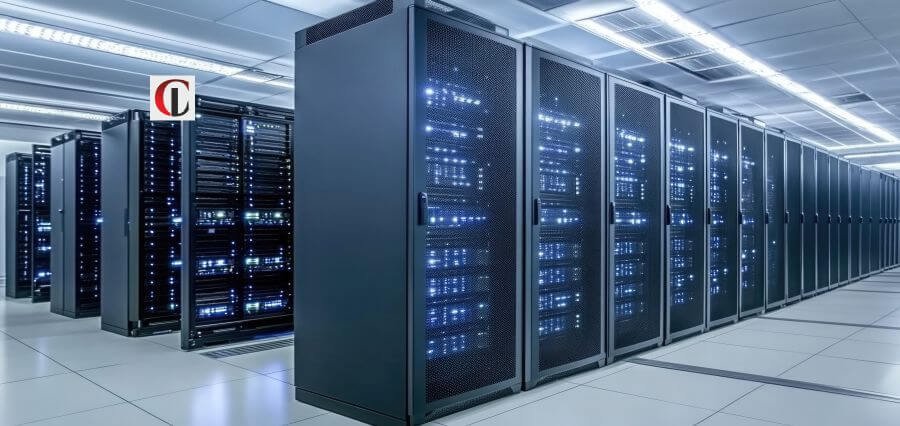Data is the lifeblood of every contemporary business in the digital economy, and the supporting infrastructure needs to be agile, robust, and efficient. The legacy data centers—defined by conventional architectures, human-managed processes, and lack of flexibility—cannot meet the growing needs of businesses today. Businesses that want to remain competitive need to adopt data center modernization not as technology refresh but as a strategic imperative. Transformation includes deploying cloud capabilities, automation, and big data analytics to improve performance, reduce costs, and achieve business agility. Replacing a data center is not a technical challenge; it’s the foundation of digital transformation. Organizations that spend on data center transformation gain improved customer experiences, faster time to market, and stronger security posture. As IT infrastructure becomes increasingly distributed and complex, workload mobility across cloud and on-premises is becoming a necessity.
Optimizing Operations with Automation and Virtualization
Optimizing the operational efficiency by automation and virtualization is one of the primary objectives of data center modernization. Legacy data centers perform manual steps to provision resources, software upgrades, and fix faults, which not only increases the risk of human error but also slows down mission-critical business processes. Organizations are able to automaton background jobs and control the workflow with ease using infrastructure-as-code (IaC), software-defined networking (SDN), and automation orchestration tools. This shift reduces overhead expenses, simplifies the deployment times, and enables IT staff to be focused on strategic projects rather than back-end maintenance.
Virtualization is also capable of enabling automation through separation of software from hardware, enabling organizations to dynamically allocate computer resources in real-time based on demand. This autonomy makes best use of resources, minimizes downtime, and reacts faster to changing business requirements. Virtualized platforms also provide scalability to support new workloads such as AI, big data analytics, and IoT workloads. This allows organizations to realize greater productivity and lower total cost of ownership (TCO), thereby making the data center a value generator.
Facilitating Greater Security and Compliance with New Infrastructure
Security threats themselves have transformed and proliferated, endangering legacy-based data centers. Modernization of data centers brings with it an opportunity to build security into infrastructure design DNA rather than trying to add it later. Modern data centers plan and implement next-generation security solutions such as zero-trust architecture, in-transit and at-rest encryption, and real-time threat detection using AI-based solutions. They repel breaches, reduce attack surfaces, and protect sensitive data securely across the entire IT stack. Compliance for models such as GDPR, HIPAA, and ISO 27001 also becomes simpler with a new architecture. Automated audit trails, role-based access control, and compliance reporting functionality built-in ease compliance and prevent the delay of manual compliance check.
Common management consoles and centralized visibility also enable easy enforcement of policy and intrusion detection in multi-clouds and hybrid. Effective proactive security and compliance management allow organizations to safeguard their online assets while building trust among customers and stakeholders. Furthermore, modern security infrastructure also provides adaptive defense solutions that learn and evolve over a certain time frame to counter evolving threats. Threat models based on machine learning, pattern-trained threats, can monitor unusual user behavior, network traffic patterns, and data accesses in real time.
Facilitating Innovation and Business Agility
The backbone of digital innovation is the next-generation data centers with their agility and scalability to facilitate prompt response to market demands. Cloud-native applications such as containers, microservices, and DevOps practices allow development teams to write, test, and deploy applications faster and more uniformly. This facilitates organizations to quickly move, deliver new products to the market sooner, and change direction on a dime on new business or disruption. Together with machine learning, AI enables better decision-making with live insights from big data. Besides this, a revamped data center provides business resiliency and continuity along with enhanced disaster recovery, backup, and failover features.
Redundancy and high availability ensure continuous delivery of service, which is extremely important in today’s always-on digital age. These traits are most essential for sectors such as finance, healthcare, and retail, where failure would incur enormous financial as well as reputational loss. With modernization, organizations place themselves in a position to not only survive but prosper during the current fast-paced technology age. Of no lesser import, cross-functional collaboration is made possible with modernization.
Conclusion
Data center modernization is not a technology refresh—it’s an operational excellence, security, and innovation catalyst. As digital capability is driving marketplace leadership in this current day and age, data center modernization helps organizations maximize what they already own, become more secure, and react quicker to the marketplace. Automation, security, or innovation led by innovation, the payback of modernization filters down to the whole business. The companies who make this switch today are positioning themselves for long-term success in the digital era. While businesses are still balking at digital disruption as much as competitive pressures, the need for modernization will only escalate. The early adopters of modernization will not only simplify their business but also build new streams of income, increase customer satisfaction, and establish a solid technology base for the next two decades.
Read Also : Breakthrough Strategies: Navigating the Future with Digital Learning Solutions

